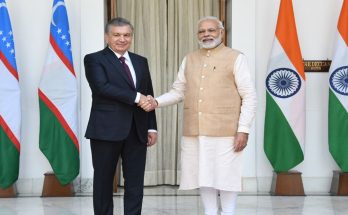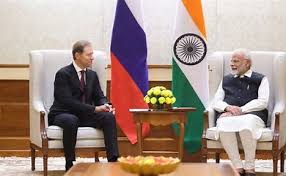 It’s just been a month and Narendra Modi led NDA government is already confronting impediments on almost all crucial fronts. With the 80 per cent India facing monsoon deficit, terrains ahead seems to provide no relief to pro-development government, in various sectors, including one of the most important oil and gas sector.
It’s just been a month and Narendra Modi led NDA government is already confronting impediments on almost all crucial fronts. With the 80 per cent India facing monsoon deficit, terrains ahead seems to provide no relief to pro-development government, in various sectors, including one of the most important oil and gas sector.
Only when Ministry of Petroleum and Natural gas, led by Dharmendra Pradhan, was contemplating a change in a gas price regime as one of the resolve for bettering India’s investment climate, helping increase in its domestic production, Iraq crisis jeopardised such move, though not directly, but through an inflationary pressure resulting from an increase in the prices of global crude oil and railway passenger fares and freight rates. Natural gas, which is been viewed as one of the important means to curb crude imports, is instrumental in dealing with such geopolitical turbulence to an extent.
Given India’s vulnerability to a rise in global crude oil prices as a result of its 75-80 per cent of its crude import dependency, the sudden and rather steep rise in the same has the potential to displace the economic recovery process of the country in the current fiscal.
CARE ratings, suggests that Iraq crisis could widen India’s current account deficit, while putting pressure on exchange rate, impeding government’s fiscal consolidation goal and putting off any nudge on interest rates by the Reserve Bank of India. Keeping fiscal deficit to 4.1 per cent level, as pegged during interim budget would seemingly impossible to be managed by India’s Finance Minister in upcoming budget.
Iraq, which accounts for four per cent of global crude oil production, making it OPEC’s second largest producer after Saudi Arabia, would further add woes to India’s oil subsidy calculus. As with each dollar rise in the price of Indian crude basket results in an increase of petroleum subsidy by around Rs. 4500 crore and with expected global crude price of $110-111 a barrel through the current fiscal, could shoot up this subsidy to Rs. 7,000-8,000 crores.
But the Indian crude oil basket which remained stable from during July 2013 to May 2014 has suddenly started moving towards the north and expectedly crossing $120 a barrel, owing to recent Iraq disruptions, posing serious threats to India’s imports pay out and local currency’s financial strength. Barclays have already estimated that a rise of $10 a barrel would likely shave 0.5 per cent off India’s GDP, which is already reeling below historic 5 per cent for two consecutive years.
According to Vandana Hari from Platts, though current supply from Iraq’s Basrah Oil Terminal is not been disrupted largely due to violence been restricted to the northern and western parts, any disruption in its supply would be mostly borne by India’s oil marketing companies, as their under-recoveries on subsidised oil products would worsen further.
But how far would India’s contingency plan for Iraq sustains, remains to be seen. Iraq, which fulfils India’s 13 per cent of total crude oil requirement, is expected to touch 20 per cent in current fiscal to the tune of 19.4 million metric tonnes.
Before India fall prey to such geo-political ambushes emanating largely from the Middle East, it should besides aptly diversity its crude oil sourcing trends, also take proactive measures to stir up investments in its domestic energy sector, with a clear objective of consistently reducing are oil import dependencies.
Companies like Reliance Industries and Essar, sensing the danger, have already started to reduce crude imports from the Middle East, while balancing the same from Africa, Latin America and Canada. This has helped Reliance to cut its crude costs that would result in decline in its refining margins that hit a four-year low of $8.1 a barrel in 2013-14. Other Indian refineries should also follow a similar suit, proactively, as most of the modern Indian refineries are now in a position to process different quality crudes.
Therefore, while India can place hope for situation in Iraq not getting out of control, it should simultaneously seek for more viable and sustainable solution. One such resolve could be to develop other alternative energy resources like non-conventional fuels including shale gas and renewable energy resources like wind and power, by fine-tuning policies in a manner that it could attract investments in both energy resources and technologies allied with them, as also intended by Petroleum Minister, Dharmendra Pradhan at the 21st World Petroleum Congress.
Another urgent step could be to revisit existing Strategic Petroleum Reserves (SPR) plans, which continues to linger to see the light of day, due to some reasons or the other resulting in further delays.
While government, sensing the significant supply disruption around the corner has asked oil companies to draw emergency import plans, fearing the rise in oil subsidies and upsetting India’s fiscal calculation, this could best, can be a short term solution. Accelerating the existing SPR plans would certainly offer a long term answer to such disruption in the future.
Other relevant measures to deal with supply disruptions could include demand-side management, through inculcating energy discipline and efficiency across industries and common folks.
Equally important would be to pursue result oriented energy diplomacy, which till date has been found wanting during previous regimes and in this regard India should try to clinch a natural gas pipeline deal with Russians during upcoming Modi’s visit in BRIC summit.
Only when all these measures, including others, witnesses a light of day, India could move ahead decisively in its endeavour to achieve energy independence in its true sense, which could safeguard its national interest, while pursuing energy security goals.
The views expressed in this article are solely those of the authors.
(Courtesy: IDSA)
Author Profile
- India Writes Network (www.indiawrites.org) is an emerging think tank and a media-publishing company focused on international affairs & the India Story. Centre for Global India Insights is the research arm of India Writes Network. To subscribe to India and the World, write to editor@indiawrites.org. A venture of TGII Media Private Limited, a leading media, publishing and consultancy company, IWN has carved a niche for balanced and exhaustive reporting and analysis of international affairs. Eminent personalities, politicians, diplomats, authors, strategy gurus and news-makers have contributed to India Writes Network, as also “India and the World,” a magazine focused on global affairs.
Latest entries
 DiplomacyOctober 4, 2025UNGA Resolution 2758 Must Not Be Distorted, One-China Principle Brooks No Challenge
DiplomacyOctober 4, 2025UNGA Resolution 2758 Must Not Be Distorted, One-China Principle Brooks No Challenge India and the WorldJuly 26, 2025MPs, diplomats laud Operation Sindoor, call for national unity to combat Pakistan-sponsored terror
India and the WorldJuly 26, 2025MPs, diplomats laud Operation Sindoor, call for national unity to combat Pakistan-sponsored terror India and the WorldJuly 25, 2025When Fire Ends, Diplomacy Begins
India and the WorldJuly 25, 2025When Fire Ends, Diplomacy Begins India and the WorldJuly 16, 2025Operation Sindoor and its Aftermath: India’s Successful Diplomatic Outreach
India and the WorldJuly 16, 2025Operation Sindoor and its Aftermath: India’s Successful Diplomatic Outreach







